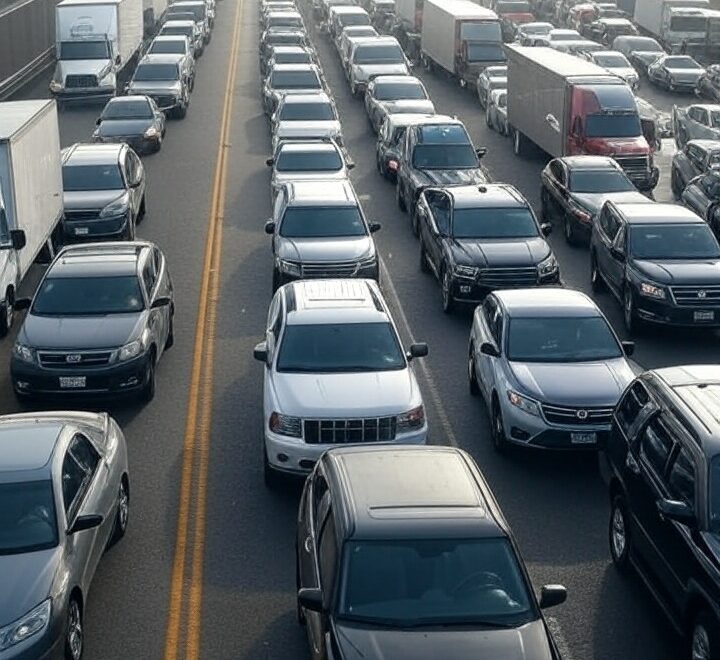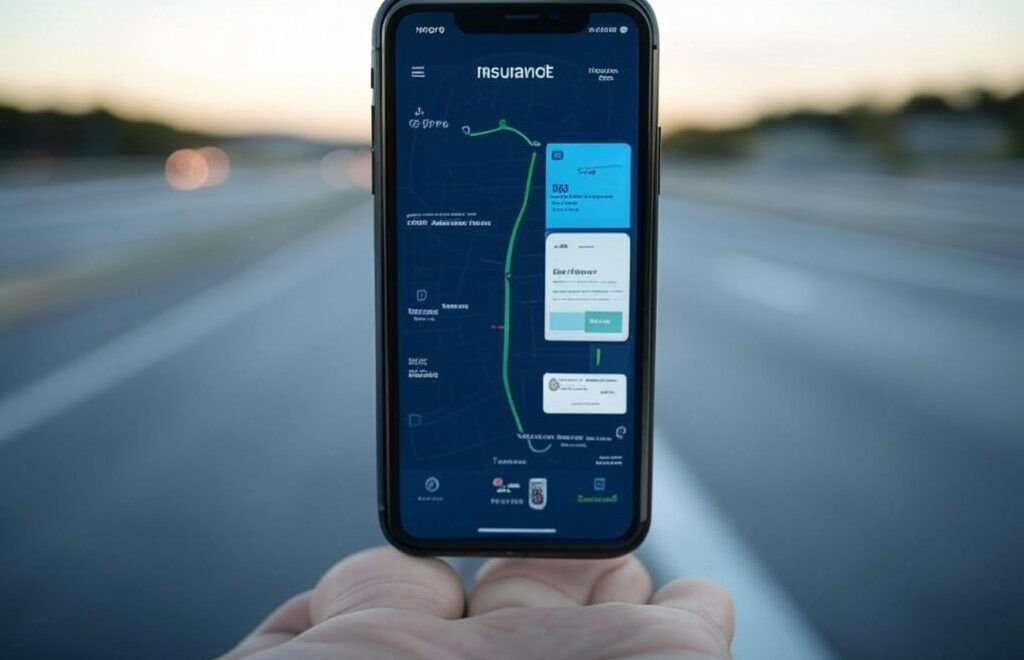Discover the origins and history of NASCAR
The Origins and History of NASCAR: From Moonshine Runs to Road-Saving Innovations
In the high-octane world of stock car racing, where engines roar and tires scream around ovals at blistering speeds, lies a story that’s equal parts rebellion, ingenuity, and evolution. The National Association for Stock Car Auto Racing—better known as NASCAR—didn’t emerge from corporate boardrooms but from the dusty backroads of Prohibition-era America.[1] What began as illicit moonshine hauls has grown into a multibillion-dollar spectacle, captivating millions. Yet, for readers of the Traffic Safety Guide, NASCAR’s true legacy isn’t just the thrill of the race; it’s the life-saving technologies born from its crashes and close calls that now protect everyday drivers on highways and byways. This article traces NASCAR’s gritty origins, its rise to prominence, and the safety breakthroughs that have trickled down from the track to your family’s sedan.
Humble Beginnings: Moonshine, Modified Fords, and the Birth of Bootleg Speed
NASCAR’s DNA is woven into the fabric of American defiance. During the Prohibition era (1920–1933), bootleggers in the rugged Appalachian Mountains and North Carolina’s Wilkes County—often called the “Moonshine Capital of the World”—transported illegal liquor under the cover of night.[2] These “moonshiners” souped up everyday Ford Model As and flathead V8s with souped-up engines, reinforced suspensions, and lightweight bodies to outrun federal agents and local sheriffs. Speed wasn’t a luxury; it was survival. Informal races soon sprouted up among these drivers, turning evasion skills into bragging rights and side bets on dirt tracks and beaches.
Post-World War II, as soldiers returned home with a taste for adrenaline, these underground competitions exploded in popularity. Beaches like Daytona, Florida—already famous for land speed records set by figures like Sir Malcolm Campbell in the 1930s—became impromptu racetracks.[3] A pivotal 1936 race on Daytona’s 4.1-mile sand-and-road course drew crowds and showcased the potential: lightweight Fords dominated, with future NASCAR founder Bill France Sr. finishing a respectable fifth.[4] But chaos reigned—promoters skimmed winnings, tracks were rudimentary, and safety was an afterthought. Enter France, a mechanic and promoter weary of the disorganization.
The Founding: Organizing Chaos into Championship Racing
By the late 1940s, stock car racing was a powder keg of potential. In early 1947, France launched the National Championship Stock Car Circuit (NCSCC), promising standardized rules, a $1,000 season prize (worth about $14,000 today), and a full calendar of nearly 40 events.[5] Fonty Flock clinched the inaugural title with seven wins. Momentum built to a crescendo on December 14, 1947, when France convened 35 racing luminaries at Daytona Beach’s Streamline Hotel. Amid chain-smoking debates and bourbon-fueled optimism, they hammered out a vision for a unified sanctioning body.
On February 21, 1948, NASCAR was officially born, its name coined by mechanic Red Vogt to sidestep trademark issues.[6] The first race followed just days earlier, on February 15, 1948—a Modified division dirt track event on Daytona’s beach course, won by Red Byron, who also claimed the national points championship.[7] Erwin “Cannonball” Baker, the legendary endurance rider, served as the inaugural commissioner. Divisions included Modified (for altered cars), Roadster (quickly scrapped), and Strictly Stock (for near-factory models, delayed by postwar parts shortages).
The Strictly Stock era kicked off in 1949 with a chaotic 20-mile exhibition near Miami, followed by the first points-paying race on June 19 at Charlotte Speedway. Jim Roper took the win after officials disqualified early leader Glenn Dunaway for illegal spring alterations.[8] Cars started as true “stock” vehicles but evolved rapidly, blending bootlegger tweaks with manufacturer tweaks for safety and speed. By 1950, the division was rechristened Grand National, marking NASCAR’s shift from fringe hobby to legitimate sport.
Growth and Golden Eras: From Beach Races to Global Spectacle
NASCAR’s ascent mirrored America’s postwar boom. The 1950s and 1960s saw beach races give way to paved ovals and superspeedways. The crown jewel, the Daytona 500, debuted in 1959 on the newly built Daytona International Speedway, drawing 40,000 fans and cementing NASCAR’s star power.[9] Icons like Richard Petty (200 career wins) and Fireball Roberts thrilled crowds, but tragedies—like Roberts’ fatal 1964 crash—underscored the need for safety reforms.
The 1970s ignited the “modern era.” R.J. Reynolds’ Winston Cup sponsorship in 1971 streamlined the schedule to 31 races, injecting tobacco-fueled marketing muscle.[10] CBS’s 1979 broadcast of the Daytona 500 exploded viewership, thanks to a post-race brawl between Cale Yarborough and the Allison brothers that hooked casual fans. The 1990s “Southern Sport Becomes National Pastime” era followed, with Jeff Gordon’s rainbow No. 24 car and Dale Earnhardt’s Intimidator persona fueling a TV boom. Sponsorships shifted (Nextel in 2004, Sprint in 2008, Monster Energy in 2017), and the Chase playoff format debuted in 2004, evolving into the current 16-driver showdown.
Today, NASCAR sanctions over 1,500 races yearly across 100+ tracks in the U.S., Canada, Mexico, Brazil, and Europe.[11] Lower tiers like Xfinity (formerly Nationwide) and Craftsman Truck thrive, while international pushes include the 2023 Brasil Series. The 2022 Next Gen car standardized parts for parity, and a 2023 Garage 56 entry at Le Mans blended stock cars with endurance racing. With seven-time champs like Petty, Earnhardt, and Jimmie Johnson, NASCAR remains a proving ground for American automotive grit.
NASCAR’s Safety Revolution: Track Lessons for Highway Heroes
NASCAR’s safety story is one of reactive brilliance—tragedies spurring tech that saves lives both on ovals and interstates. The 2001 Daytona 500 death of Earnhardt, from a basilar skull fracture, was the catalyst: No driver fatalities have occurred since.[12] Through the NASCAR Safety Institute and collaborations with automakers, innovations tested at 200 mph now enhance your daily commute.
The HANS Device: Neck-Saving Restraint
Post-Earnhardt, the Head and Neck Support (HANS) device became mandatory in 2001—a U-shaped brace tethering the helmet to the shoulders, slashing basilar skull fracture risk by over 50%.[13] Widely hailed as racing’s top safety advance, it’s now standard in FIA-sanctioned series and inspires neck bolsters in high-performance street cars from BMW and Porsche, reducing whiplash in rear-end collisions.[14]
SAFER Barriers: Absorbing the Impact
Developed in collaboration with IndyCar but aggressively adopted by NASCAR from 2002, Steel and Foam Energy Reduction (SAFER) barriers line walls with foam-filled steel tubes that flex and dissipate crash energy, cutting G-forces by up to 80%.[15] By 2015, most tracks were SAFER-clad. This tech echoes in street cars’ energy-absorbing bumpers and side-impact beams, seen in Ford F-150s and Chevy Silverados, which crumple strategically to shield occupants.[16]
Fuel Cells and Fire Prevention: Containing the Blaze
NASCAR’s foam-filled, bladder-like fuel cells—mandated since the 1980s and refined in the 2007 Car of Tomorrow—prevent spills and explosions, holding just 18 gallons in a crash-resistant bladder.[17] Adopted from aviation, they’ve influenced plastic fuel tanks in modern sedans (e.g., Honda Civics), which flex rather than rupture, slashing post-crash fire risks by 30%.[18] Fire-retardant Nomex suits, mandatory since the 1960s, paved the way for flame-resistant interior fabrics in vehicles.
Harnesses and Seats: Locking In Protection
Evolving from five-point belts in 1976 to seven-point in 2015, NASCAR harnesses distribute crash forces across the body.[19] Paired with carbon-fiber seats that hug the torso, they’ve cut spinal injuries dramatically. Street adaptations include three-point belts with pretensioners in most cars and energy-absorbing seats in Volvos, mimicking racing’s occupant retention.[20]
Crumple Zones and Aerodynamics: Controlled Chaos
Racing chassis with integrated roll cages and crumple zones—deforming to absorb hits—directly informed production cars’ “safety cages” and front/rear crumple structures, standard since the 1990s.[21] Roof flaps (1994) and shark fins (2023) stabilize spins, influencing electronic stability control in everyday vehicles like Toyotas.
A Legacy of Speed with Safeguards
From bootleggers dodging revenuers to 150,000 fans packing Bristol Motor Speedway, NASCAR embodies American innovation under pressure. Its history is a testament to turning peril into progress, with safety tech that’s prevented countless highway horrors. As we buckle up for the road ahead, remember: The next time your car’s airbags deploy or fuel tank holds firm, you might owe a nod to the moonshiners who started it all—and the racers who made it safer for everyone. Drive smart, stay safe.
For more on traffic safety, explore the Traffic Safety Guide’s resources on vehicle maintenance and defensive driving.
References
- NASCAR origins and moonshine history overview
- Prohibition-era bootlegging in Appalachia
- Daytona Beach racing history pre-NASCAR
- 1936 Daytona beach race details
- 1947 NCSCC launch and early events
- NASCAR founding in 1948
- First NASCAR race, February 1948
- 1949 Strictly Stock series inception
- 1959 Daytona 500 debut
- 1971 Winston Cup sponsorship
- Current NASCAR global reach and stats
- 2001 Earnhardt incident and safety improvements
- HANS device adoption post-2001
- HANS influence on street cars
- SAFER barrier development and use
- SAFER tech in production vehicles
- NASCAR fuel cell history
- Fuel cell adaptations in consumer cars
- NASCAR harness evolution
- Harness and seat tech in street vehicles
- Crumple zones from racing to roads








